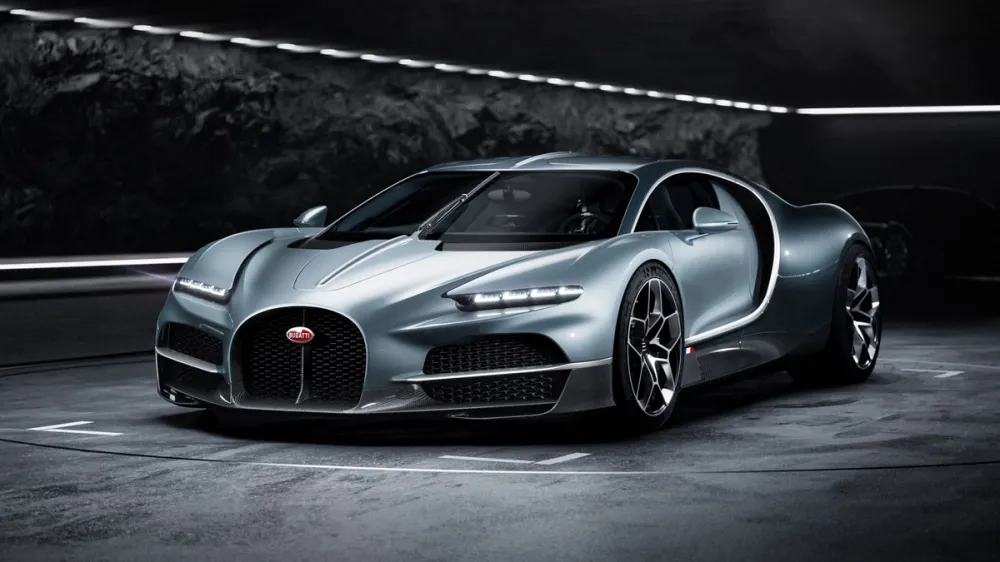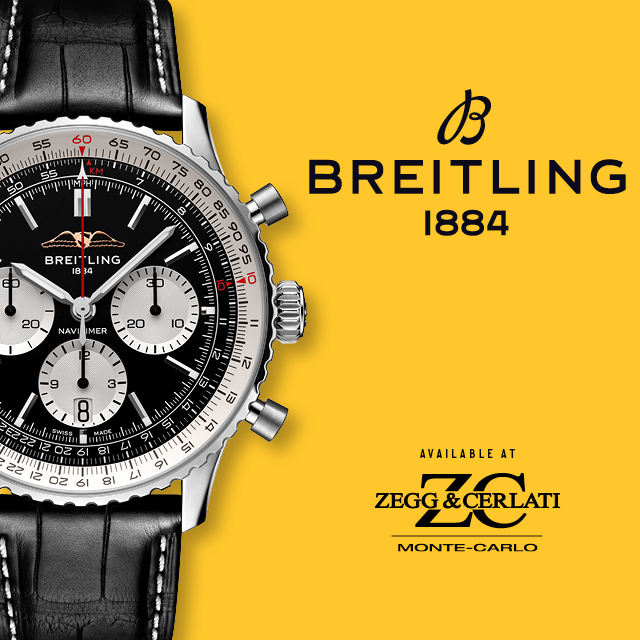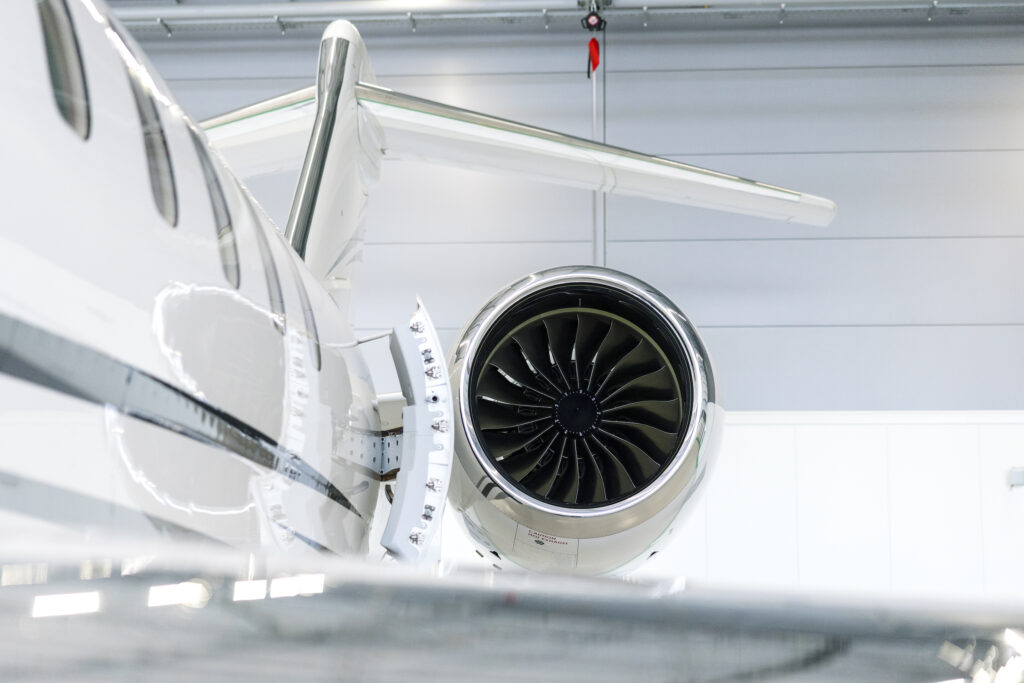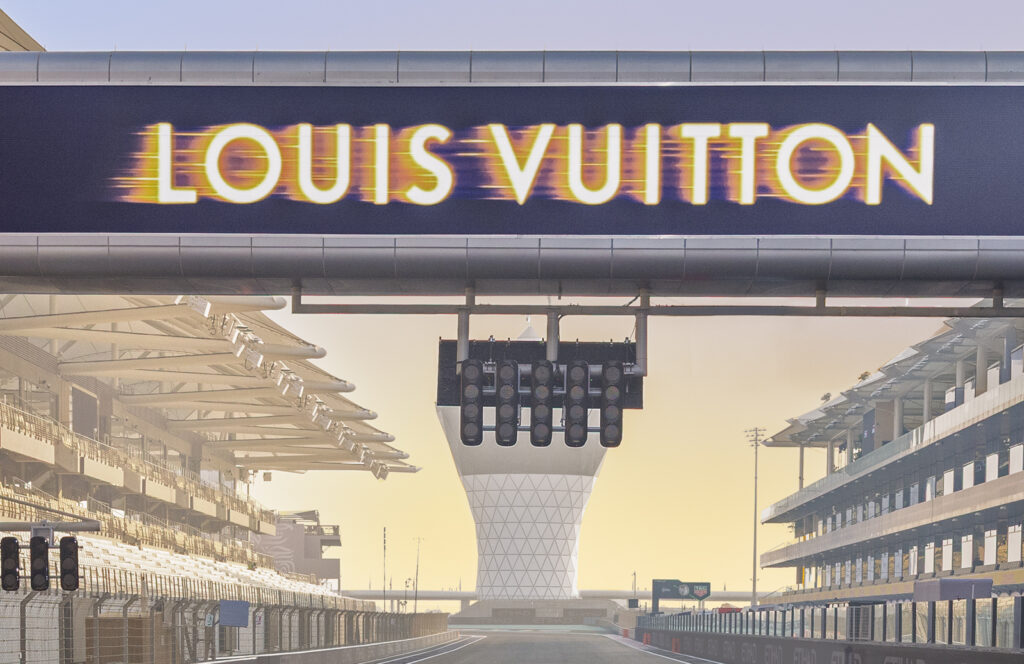Limited to 250 examples, the most powerful model in the marque’s history features an instrument cluster inspired by the finest Swiss horology.
First there was Veyron. Then came Chiron. Now Tourbillon. Revealed today, Bugatti‘s new 1,800 hp hypercar delivers even more shock-and-awe than its predecessors. Gone is the famed 8.0-liter quad-turbo W16 engine. In its place is a new 1,000 hp, 8.3-liter naturally aspirated V16 paired with a trio of electric motors delivering 800 hp. That combination makes this the most powerful Bugatti ever.
While the design of the all-carbon-composite body is clearly derived from the signature lines of both the Veyron and Chiron, its roofline is lower, the body lighter and more aerodynamic, and that iconic horseshoe grille more imposing. Yet the likely headline feature will be the car’s all-new interior featuring a skeletonized, titanium-and-sapphire-glass instrument cluster inspired by Swiss watchmaking (“tourbillon” referring to a mechanical complication that increases accuracy in high-end timepieces).
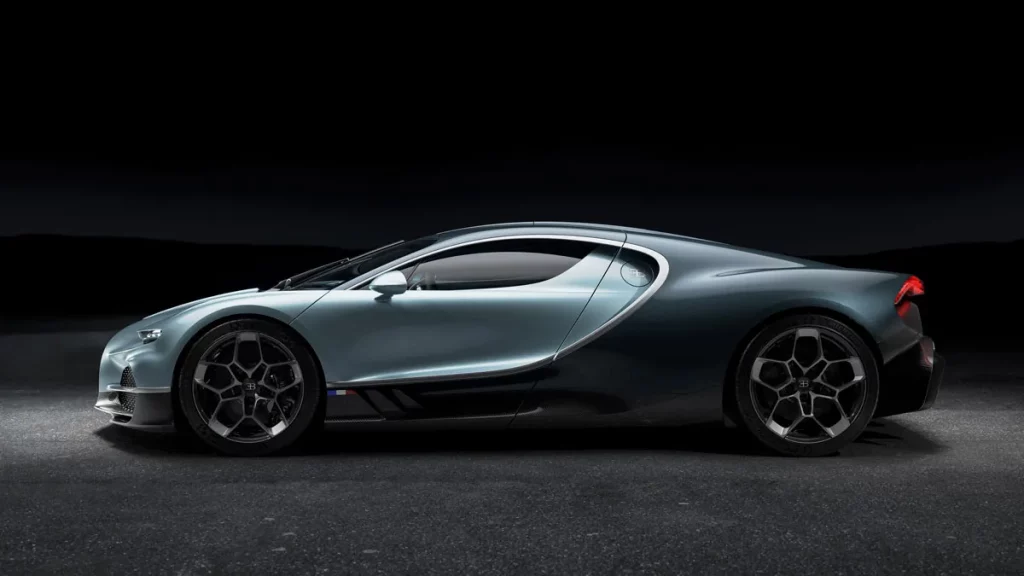
“Beauty, performance, and luxury formed the blueprint for the Tourbillon. What we have created is a car that is more elegant, more emotive, and more luxurious than anything before it,” stated Mate Rimac, Bugatti-Rimac’s CEO, to Robb Report during an exclusive preview at the company’s newly opened design studio in Berlin.
He explained that, four years ago, when the Tourbillon concept was on the drawing board, there were multiple suggestions for what an all-new Bugatti might look like. Options included an SUV, a coupe-like crossover, and a luxury four-door sedan. Then there was the choice of either a hybrid or all-electric power train.
“The proposal to make it electric was the obvious choice. We had our [Rimac] Nevera, that we could easily transfer our technology and re-skin the body. But I felt it was wrong for Bugatti,” said Rimac. “I wanted a successor to the Veyron and Chiron, a true hypercar with a combustion engine. Our customers agreed.”
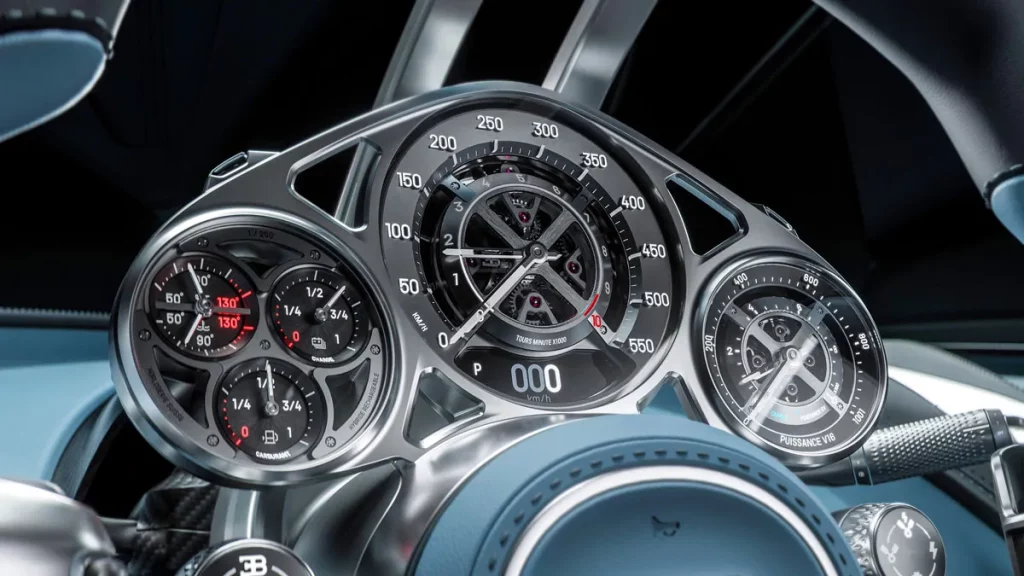
To create it, Rimac teamed with Cosworth, a renowned British engine builder, to help develop the naturally aspirated V16 mill. Designed to rev to 9,000 rpm, the engine offers a similar output as the original Veyron’s quad-turbocharged W16. To heighten the performance, Rimac and his team used their proven expertise in electric propulsion to pair the V16 with twin electric motors driving the front wheels, with a third at the rear. For battery power, a 25 kWh, oil-cooled 800-volt pack is integrated into the chassis and located behind the passengers. It’s powerful enough to give the Tourbillon a usable electric-only range of around 37 miles.
As you would expect, the Tourbillon has been developed to be blisteringly fast. According to Emilio Scervo, Bugatti’s chief technical officer, early prototype tests suggest a rate of acceleration from zero to 62 mph in 2.0 seconds, zero to 124 mph in 5.0 seconds, and zero to 186 mph in 10.0 seconds. Flat out, the max-speed target is 445 kph (276 mph), though with a speedometer that reads up to 550 kph (341 mph), we expect there’s more to come.
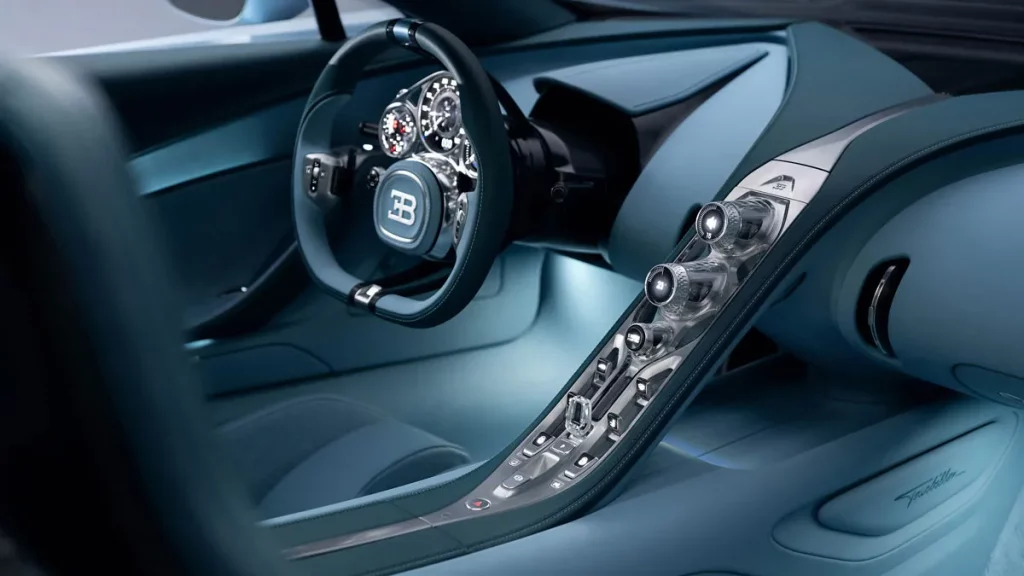
“For us, it was important that the car retained the pure and raw analog feel of a naturally aspirated combustion engine, while pairing it with the agility and ability provided by electric motors,” said Scervo.
The engine itself sits low in the Tourbillon’s new, super-stiff body structure, which is formed using next-generation T800 carbon composites. It features a forged-aluminum, multi-link suspension—front and rear—that replaces the previous double-wishbone steel setup used in the Chiron. The 3-D-printed aluminum suspension arms and uprights, and AI-developed, 3-D-printed hollow airfoil arm at the rear, are nothing less than pieces of art.
For the exterior lines, Frank Heyl, Bugatti’s director of design, explained that styling influences came from three landmark Bugattis of old: the Type 35 racer of the 1920s, the mile-long Type 41 Royale built from 1927 through 1933, and the storied Type 57SC Atlantic from the 1930s.
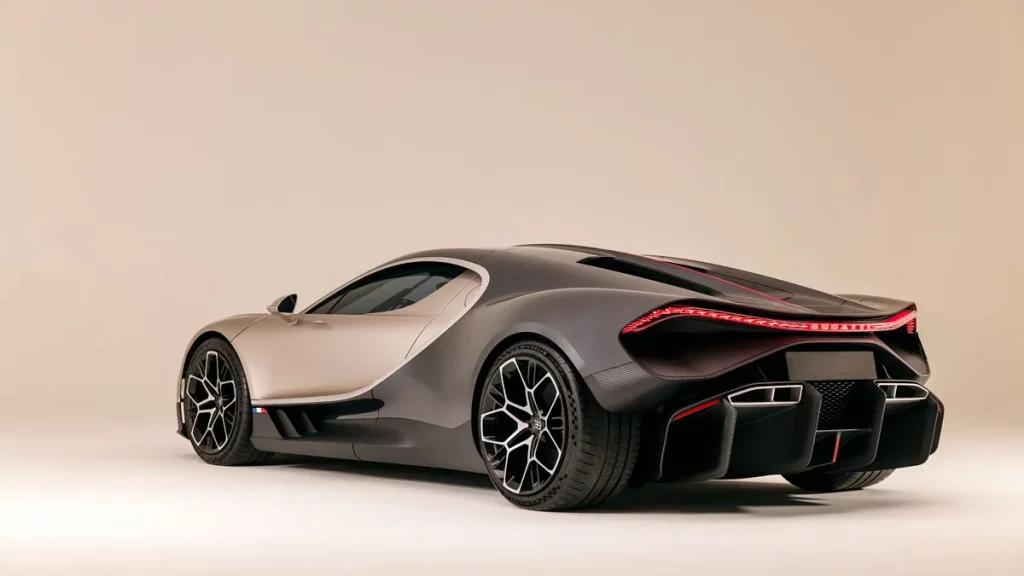
“The design focus was on Bugatti’s iconic horseshoe grille. It’s significantly wider and lower than in the Chiron, and it’s from which all lines of the car originate. It defines the car,” said Heyl, who added that another signature element is “the new central windshield wiper, which continues the line that starts on the hood and flows back along the roof. Just like on the Atlantic.”
Set back from the grille are twin rows of wafer-thin LED lights that measure less than a half-inch thick. Between them is a narrow panel on the hood that raises up to reveal a “frunk” big enough for a set of custom-designed luggage.
In profile, the sweeping “Bugatti line” around the doors—a defining feature of both the Veyron and Chiron—looks even more striking with the car’s lowered roofline. At the rear, huge exhausts, a Le Mans–style carbon-fiber diffuser (twice the size of that on the Chiron), and a rolling wave of LED lights featuring illuminated “Bugatti” lettering, add to the visual drama. And to allow onlookers to gaze at that V16 power plant—and for cooling purposes—the engine sits open to the elements.
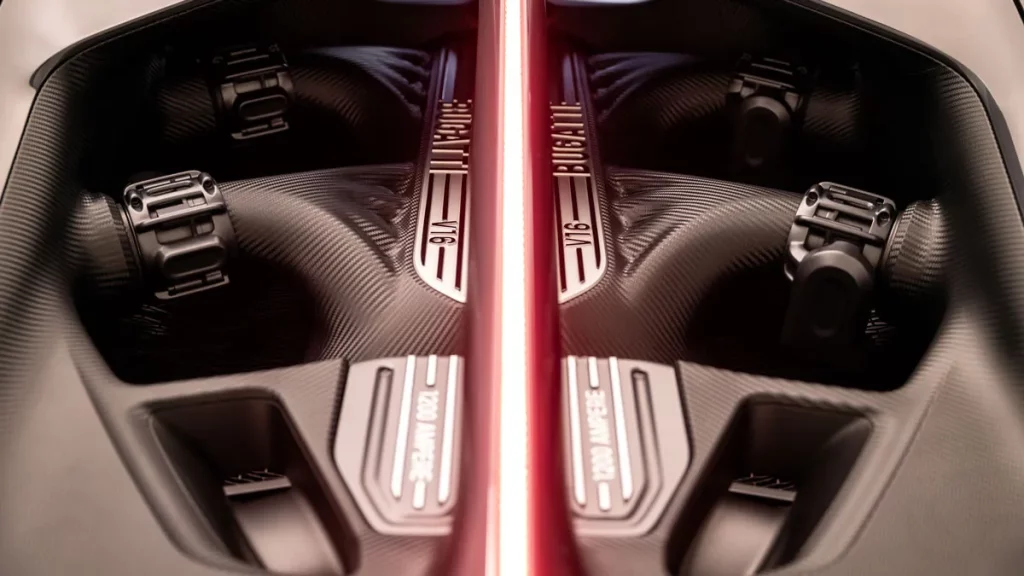
Upon opening the dihedral “scissor” doors and entering the cockpit, you’re presented with arguably the new Tourbillon’s most dramatic feature; a skeletonized instrument cluster inspired by the art of Swiss watchmaking. Made up of more than 600 components, it’s constructed from titanium with sapphire-glass faces and detailing that incorporates rubies.
The three-dial cluster is fixed in place, with the twin spokes of the flat-bottom steering wheel rotating around it. The unit is constructed, in-house, to remarkable horological tolerances of 50 microns—the average cross-section of a human hair. The entire cluster weighs just 25 ounces.
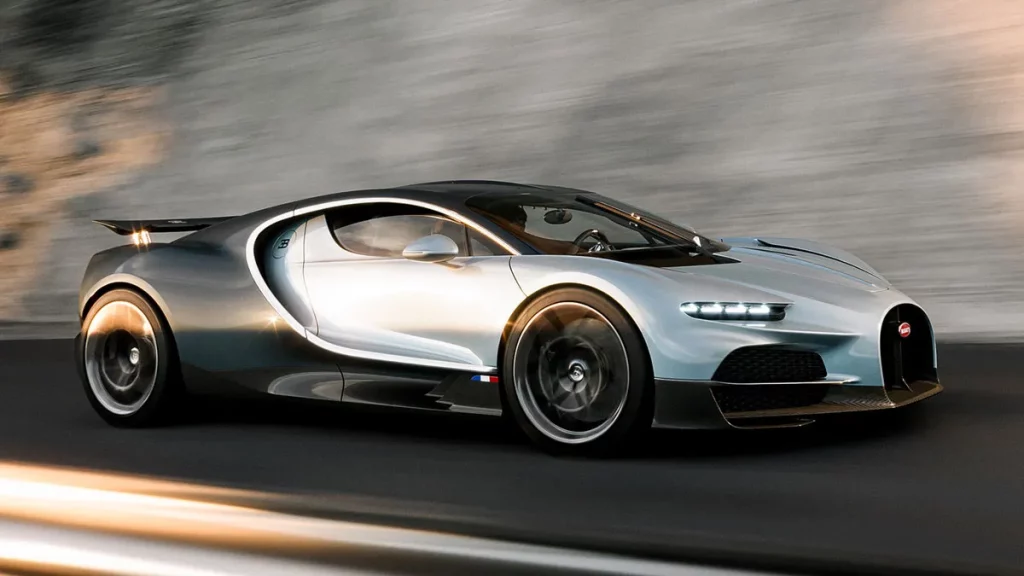
Cascading down from the middle of the fascia is the center console featuring crystal glass that’s formed over 13 separate stages to ensure strength and clarity. The aluminum elements are anodized and milled from a single block.
To add a little theater to firing-up that big V16, there’s a prominent center-console aluminum knob that you pull to start, and push to turn off. It’s another nod to Bugatti models of yesteryear. What you won’t see, however, are any touchscreens. Heyl believes that the primary element that dates a car is an oversized screen. “What was state-of-the-art 10 years ago, is now ugly,” said Heyl. “The Tourbillon is designed to be timeless.”
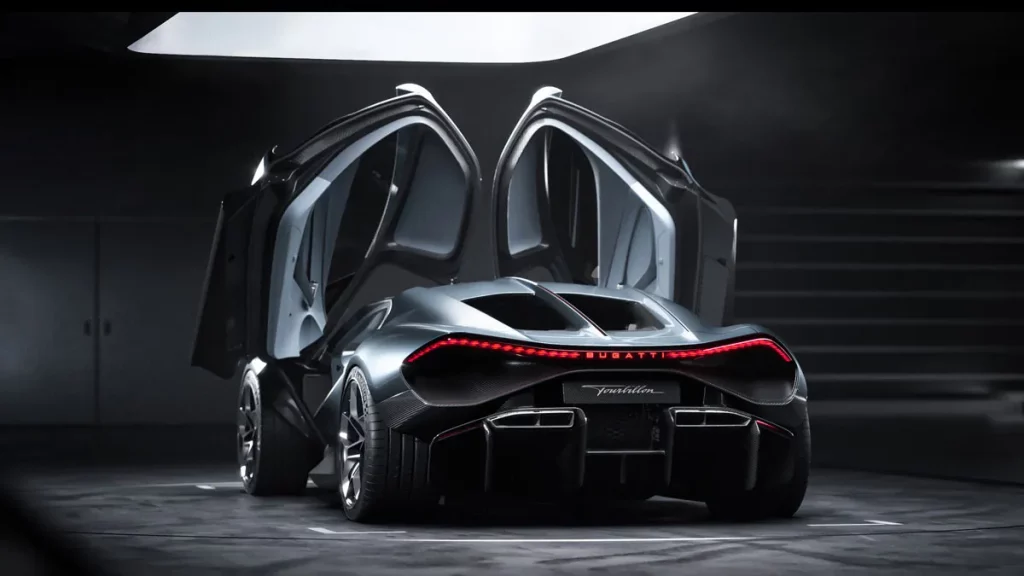
In Bugatti tradition, the Tourbillon will also be highly exclusive. Only 250 examples are planned, each starting at €3.8 million. The first customer cars are scheduled to be built at Bugatti’s atelier in Molsheim, France, starting in 2026.
“Yes, it is crazy to build a new V16 engine, to integrate it with a new battery pack and electric motors, and to have 3-D-printed suspension parts and a real Swiss watchmaker instrument cluster,” noted Rimac. “But it is what Ettore Bugatti would have done.”

